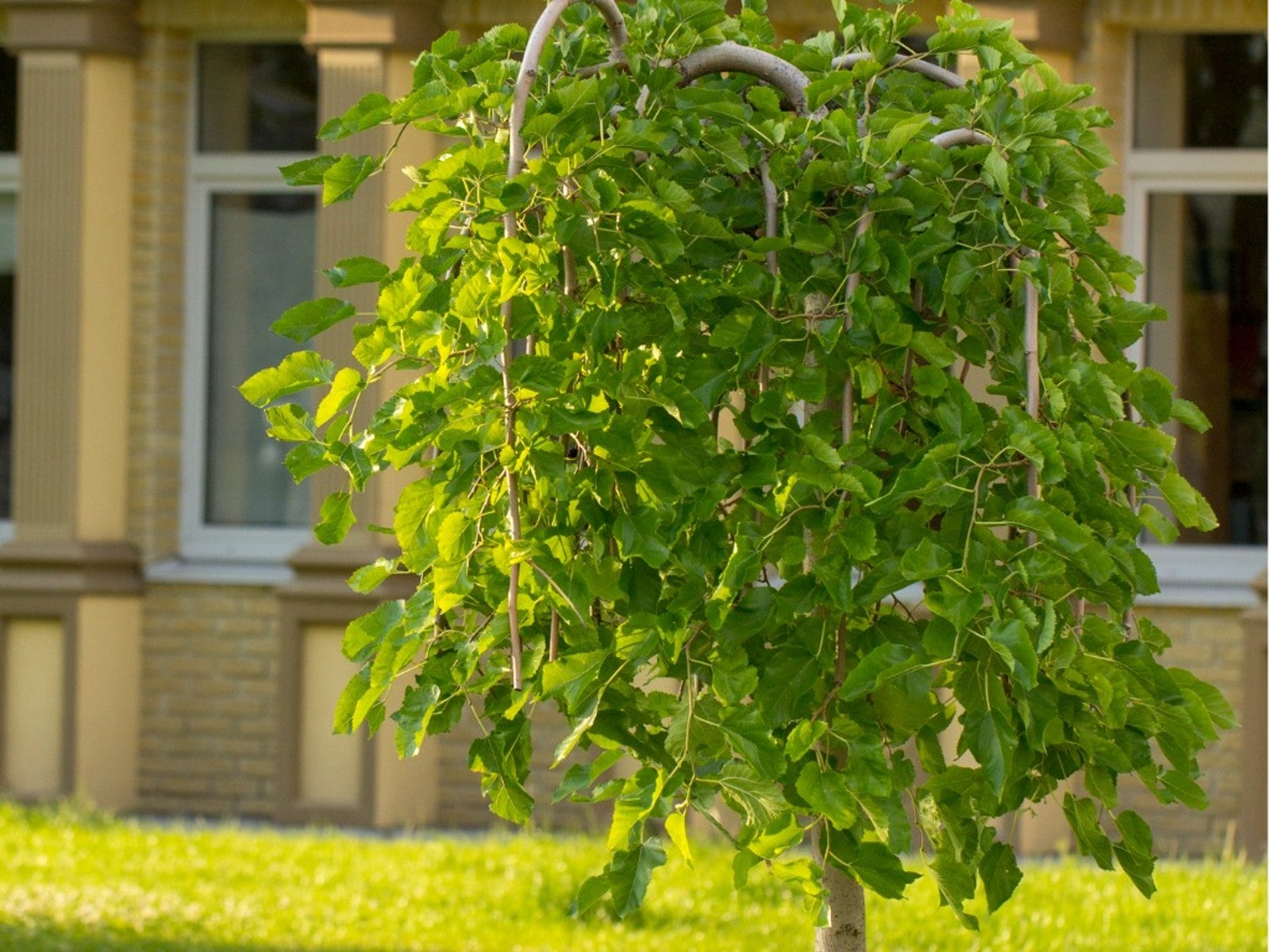
The weeping mulberry is also known by its botanical name of Morus alba. At one time it was used to feed valuable silkworms, which love to munch on mulberry leaves, but that is no longer the case. So what is a weeping mulberry? The following article contains information on planting and growing a weeping mulberry.
What is a Weeping Mulberry?
Native to China, the mulberry was introduced to provide food for the thriving silkworm trade. Because the tree is unfussy and will tolerate almost any soil and even a fair amount of neglect, it soon became naturalized and considered to be more of a weed.
Today’s new cultivars, from the weeping varieties to hybrid dwarf varieties to fruitless types have brought the tree back into vogue again. This fast-growing tree (up to 10 feet or 3 m. a season) is hardy in USDA zones 5-8.
The weeping mulberry has a unique, twisted shape and multiple weeping branches and is very ornamental. Some types will attain a height of 15 feet (4.5 m.) and a spread of between 8-15 feet (2.5-4.5 m.). The leaves of the tree are undivided or lobed, dark green, and 2-7 inches (5-18 cm.) long.
About Growing Weeping Mulberry Trees
There are two major types to choose from when planting a weeping mulberry tree.
- A male tree, Morus alba ‘Chaparral,’ has shiny green leaves and attains a height of between 10-15 feet (3-4.5 m.).
- A female tree, M. alba ‘Pendula,’ bears fruit and gets to about 6-8 feet (2-2.5 m.) in height.
Weeping Mulberry Fruit
Are weeping mulberry berries edible? Yes, indeed. Weeping mulberry fruit is sweet and succulent. They can be made into desserts, jams, or jellies. Berries can be black, yet not fully ripe. Wait until they are at full size and then give them a few more days when they will be at peak sweetness.
To pick the fruit, surround the tree with a tarp or old sheet and then knock the branches or trunk of the tree. This should be sufficient to loosen any ripe berries, which can then be collected from the tarp. Don’t delay picking the berries or the birds will beat you to it.
Sign up for the Gardening Know How newsletter today and receive a free copy of our e-book "How to Grow Delicious Tomatoes".
Weeping Mulberry Tree Care
As mentioned, weeping mulberries are tolerant of the conditions they are growing in. They should be planted in well-drained soil in full to partial sun.
For the first few years, your plant will need to be on a regular watering schedule but, once it's established, the tree becomes fairly drought-tolerant.
If you wish to retard the vigorous growth of a weeping mulberry, cut its summer growth back by half in July. This will keep the tree at a shorter height but encourage it to bush out, which also makes it easier to pick berries.
Be aware that the tree can be extremely messy due to dropping fruit. Mulberries also have strong surface roots that, when planted near a sidewalk or drive, may undermine the surface. Lawn mowing can also be a challenge due to the surface roots. Weeping mulberries have little to no pest or disease issues so continued weeping mulberry tree care is minimal.

Amy Grant has been gardening for 30 years and writing for 15. A professional chef and caterer, Amy's area of expertise is culinary gardening.
